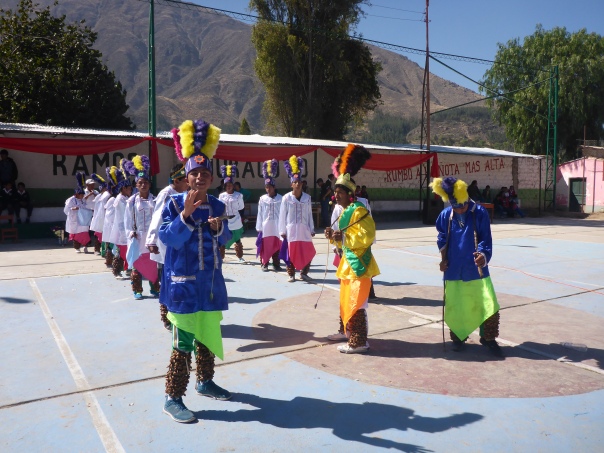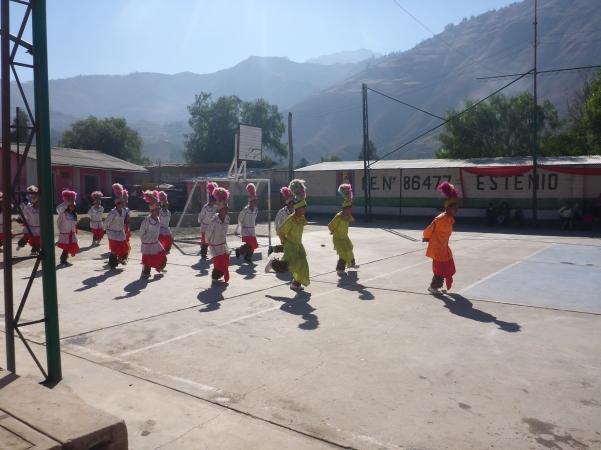For today’s Martes de Música, we are covering a traditional dance of Áncash, the Shaqsha. But Mark, this is Martes de Música, not Martes de Baile, why are you talking about a dance on a post about music? Well, anonymous reader, that is because the Shaqsha is not just a mere dance, but also a way for creating percussion music.
You see, not any person can just go out and dance the shaqsha like it were breakdancing, the tango, or even salsa. In order to dance the shaqsha, you need to have the proper accessories. Below, you can take a look at a fairly standard attire for shaqsha dancers.

The first item of note is the crown, which is believed to have been used to poke fun at the royal Spanish family who once controlled Perú. The shirt and kilt-like clothes are also intended as parodies, mimicking the clothing worn by the early Spanish Conquistadores. In the hands of some of the dancers, you will also note whips, which could be a reference to the farming lifestyles of the past.
However, the most important accessory to the shaqsha is what you see around the legs of each of the dancers in the photo above; the shaqapas. What you are seeing is more or less a ton of small dried seed pods tied together with string which is then fastened around the legs and occasionally the arms of each dancer. The shaqapas are integral to the shaqsha, because as the dancer moves, the seed pods and the seeds inside shake, creating a vibrant and entrancing sound, a sound which is generally interpreted as “shac shac”, hence the name of the dance. So you see, the Shaqsha is as much as a dance as it is a musical style, with the shaking of the seeds creating a beautiful sound.

The dance itself is incredibly energetic, involving lots of hopping, jumping, screaming, and foot pounding. Honestly, it looks absolutely exhausting, and I can’t imagine how shaqsha dancers manage to keep up their energy in the intense sierra sun. The dance is generally performed during religious festivals here in Áncash, with the shaqsha groups being accompanied by a small group of musicians playing wooden flutes and drums. The photos above are from a religious festival celebrating the Virgin Mary held at my local school in Yuracoto, I.E. Estenio Torres Ramos.
Shaqsha is my absolute favorite dance here in Perú, and I’m hoping to eventually try it out with the help of some of my students in Yuracoto. With one year left in my service, I feel like I should be able to squeeze in a little time for a practice or two (or five). So to finish out this post, I leave you with a video of some Shaqsha performed in Yuracoto last week so you can fully appreciate this entrancing dance and enjoy the melodious sounds of the shaqapas.
Until next time,
MGB